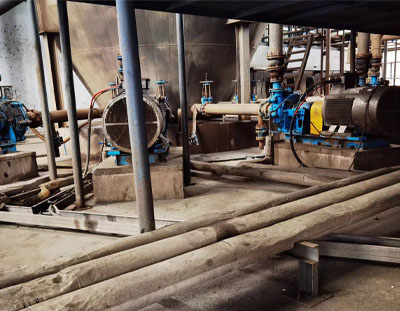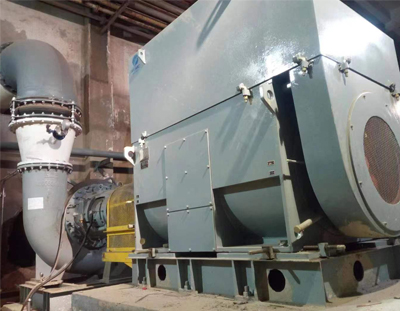How centrifugal pumps evolved from waterwheels
What is a pump?
A pump is a machine used to transport liquids or pressurize liquids.
The earliest pump was used for water supply, and it was invented by our Chinese:

Of course, many people don't call it a pump, but a "water windmill".
Later, around300 BC, Archimedes invented a pump called "Archimedes screw pump", which is still being produced by manufacturers. The handle has been replaced with an electric one.
Of course, many people don't call it a pump, but a "water windmill".
Later, around300 BC, Archimedes invented a pump called "Archimedes screw pump", which is still being produced by manufacturers. The handle has been replaced with an electric one.

Purpose of the pump
(1) Liquid from low pressure area to high pressure area

(2) Liquid from low level to high level

(3) Long-distance transport of liquid

Centrifugal pump
There are many types of pumps, here we introduce the most basic "centrifugal pump", its structure is as follows:

The working principle is: the liquid rotates with the impeller and moves along the channel between the blades to the outer edge under the action of centrifugal force, the speed increases and the mechanical energy increases.The liquid leaves the impeller and enters the volute, the volute flow channel gradually expands, the fluid velocity slows down, the kinetic energy of the liquid is converted into static pressure energy, the pressure continues to rise, and finally flows out of the volute along the tangential direction and is discharged through the conduit:

The animation effect of the working process is as follows:

1.impeller
The impeller is the core component that transmits the mechanical energy of the prime mover to the liquid and improves the energy of the liquid. It has three types of open, semi-open and closed impellers:

The open impeller has no front disc and rear disc but only blades, and is mostly used to transport liquids containing impurities. For example, the impeller of a sewage pump adopts an open impeller.
The semi-open impeller only has a rear disc.
The closed impeller has both front and rear disks, and the impellers of the clean water pump are all closed impellers.
The impeller should have sufficient strength and rigidity, the shape of the flow channel should conform to the flow law of the liquid, and the surface roughness of the flow channel should be small; the material should have good wear resistance; the structure is simple and the manufacturing process is good. The impeller of a centrifugal pump is generally a backward vane shape, which is made by casting.
2.Pump casing
The pump casing collects the liquid from the impeller, converts the kinetic energy of part of the liquid into pressure energy, and finally guides the liquid evenly to the secondary impeller or to the discharge port.
The casings of single-stage centrifugal pumps are mostly spiral volute casings, which have the characteristics of convenient manufacture and high efficiency.
The output of the worm should be in the same direction as the rotation of the impeller:

3.Sealing means
Stuffing box is mainly used to prevent the leakage of liquid when the pressure increases. There are many types of sealing devices, the most used are packing seals and mechanical seals.
Packing seal is to press some loose packing on the shaft with a certain pressure to achieve the purpose of sealing. The soft packing is oil-impregnated or graphite-coated asbestos rope, put it between the stuffing box and the pump shaft, and press the gland to force it to deform to seal. Packing can be damaged after a period of use and requires regular inspection and replacement.
![]()
Mechanical seals have two hard and smooth surfaces, one static and one rotating. This kind of sealing device can achieve good sealing requirements, but it cannot be used in the liquid delivery system containing impurities, because its smooth surface will be broken and the sealing effect will be lost. This type of seal is very common in liquid circulation systems:


Cavitation
Cavitation is the phenomenon of cavernous corrosion on the metal surface in contact with the liquid under the condition of high-speed flow and pressure change.
Cavitation often occurs in the high-speed decompression zone such as the blade tip of a centrifugal pump, where cavities are formed, and the cavities are crushed in the high-pressure zone and generate impact pressure, destroying the protective film on the metal surface and accelerating the corrosion rate. It first forms many tiny pits on the metal surface, and then gradually expands into caves.

Important parameters
(1) Flow
The volume of liquid discharged by the pump per unit time is called the flow rate, expressed by Q, and the unit is cubic meters per hour (m3/h).
(2) Lift
The energy obtained by a unit weight of liquid passing through the pump is called head. The head of the pump, including the suction head, is approximately the difference between the pump outlet and inlet pressures. The head is represented by "H", and the unit is meters (m), that is, the height of the liquid column of the pumped liquid.
(3) Speed
The number of revolutions of the pump shaft per unit time, represented by "n", and the unit is r/min.
(4) Power
The power of the pump refers to the input power, that is, the power transmitted by the prime mover to the pump shaft, also known as the shaft power, represented by P. The effective power of the pump, also known as the output power, is represented by Pe. The unit is W.
The efficiency of the pump refers to the ratio of the effective power to the input power, expressed by η, and the unit is percentage.
(5) Cavitation allowance
The cavitation allowance refers to the excess energy that exceeds the vaporization pressure per unit weight of liquid at the suction port of the pump, expressed in NPSH, and the unit is meters. According to the NPSH, the "suction stroke" of the pump can be calculated, that is, the vacuum degree that the pump allows to suck the liquid, that is, the allowable geometric installation height of the pump.
characteristic curve
Usually the relationship curve describing the main performance parameters is called the characteristic curve of the pump, including: flow-head curve (Q-H), flow-power curve (Q-N), flow-efficiency curve (Q-η), flow-gas curve Plunge allowance curve (Q-NPSH).

The characteristic curve of the centrifugal pump is attached to the product catalog by the manufacturer, which is the main basis for guiding the correct selection and operation of the centrifugal pump.
We receive enquiries in English, Español (Spanish), Русский язык (Russian), Français (French) and العربية (Arabic). Our professional team will reply to you within one business day. Please feel FREE to contact us!








